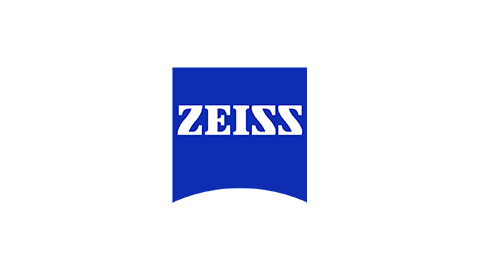The Role of Satellite Imagery in Modern Agriculture In the ever-evolving landscape of agriculture,...
Leveraging Satellite Imagery and AI for Sustainable Agriculture
The Role of Satellite Imagery in Modern Agriculture
In recent years, satellite imagery has emerged as a vital tool in modern agriculture, offering unprecedented insights into crop health, soil condition, and resource management. By capturing high-resolution images of agricultural fields, satellites provide a comprehensive overview that helps farmers and decision-makers monitor vast areas with precision and efficiency. This innovative approach enables the identification of growth patterns, detection of anomalies, and assessment of environmental impacts, all from a vantage point in space.
Satellite imagery not only allows for real-time monitoring but also enables historical comparisons, helping to track changes over time and predict future trends. This level of detail is crucial for optimizing agricultural practices, reducing waste, and ensuring sustainable crop production. As the agricultural sector in Saudi Arabia continues to evolve, the integration of satellite technology is proving to be a game-changer in achieving food security and environmental sustainability.
Harnessing AI for Precision Crop Monitoring
Artificial Intelligence (AI) is transforming the way we approach crop monitoring. By leveraging advanced algorithms and machine learning models, AI can analyze satellite images to provide precise, actionable insights. These technologies can detect subtle changes in crop health, identify areas of stress, and predict yields with remarkable accuracy. This level of precision is essential for making informed decisions that enhance productivity and reduce losses.
In Saudi Arabia, AI-powered crop monitoring is helping farmers optimize their irrigation schedules, apply fertilizers more efficiently, and implement targeted pest control measures. For instance, by analyzing multispectral images, AI can differentiate between healthy and stressed crops, allowing for timely interventions. This not only improves crop yields but also conserves resources, contributing to a more sustainable agricultural system.
Optimizing Water Usage Through Advanced Imagery
Water management is a critical challenge in agriculture, especially in arid regions like Saudi Arabia. Advanced satellite imagery is playing a pivotal role in addressing this issue by providing accurate data on soil moisture levels, evapotranspiration rates, and crop water requirements. This information enables farmers to optimize their irrigation practices, ensuring that water is used efficiently and sustainably.
By monitoring fields from space, satellites can identify areas that require additional irrigation and those where water can be conserved. This targeted approach reduces water waste and enhances the overall efficiency of water use in agriculture. Projects in regions like Al-Qassim and Al-Ahsa have demonstrated significant improvements in water management practices, thanks to the integration of satellite imagery and AI technologies.
Early Detection of Agricultural Pests Using Satellite Data
Agricultural pests pose a significant threat to crop yields and food security. Early detection and intervention are crucial to mitigating their impact. Satellite data, combined with AI analysis, offers a powerful solution for early pest detection. By monitoring changes in vegetation patterns and plant health, these technologies can identify the early signs of pest infestations.
In Saudi Arabia, the use of satellite imagery for pest detection has proven effective in regions like Al-Jouf, where early warnings have enabled swift action against locust swarms. This proactive approach minimizes the damage caused by pests and helps maintain healthy crop production. The ability to detect and respond to pest threats early on is a testament to the transformative potential of satellite and AI technologies in agriculture.
Successful Initiatives and Case Studies in Saudi Arabia
Several successful initiatives in Saudi Arabia have showcased the benefits of integrating satellite imagery and AI in agriculture. One notable example is the "Smart Palm" initiative, which uses remote sensing technologies to monitor the health and productivity of date palms. This project has significantly improved the management of date palm groves, enhancing yield quality and reducing resource wastage.
Another successful case study is the implementation of satellite-based monitoring in the Al-Qassim region, where wheat growth patterns are closely observed. By identifying areas with abnormal growth, farmers can take corrective measures to prevent potential losses. These initiatives highlight the practical applications of satellite and AI technologies, paving the way for a more sustainable and productive agricultural sector in Saudi Arabia.
Future Prospects: Integrating AI and Satellite Technology for Sustainable Farming
The future of agriculture in Saudi Arabia looks promising with the continued integration of AI and satellite technology. These advancements offer the potential to revolutionize farming practices, making them more efficient, sustainable, and resilient to environmental challenges. As technology evolves, we can expect even more sophisticated tools for crop monitoring, resource management, and pest control.
Collaboration between technology providers, research institutions, and agricultural stakeholders will be key to realizing these prospects. By leveraging the latest innovations in satellite imagery and AI, Saudi Arabia can achieve its vision of sustainable agriculture, aligned with the goals of Vision 2030. The journey towards a more productive and sustainable agricultural sector is just beginning, and the possibilities are vast.
In conclusion, the integration of satellite imagery and AI technologies is transforming agriculture in Saudi Arabia. From precision crop monitoring to efficient water usage and early pest detection, these innovations are enhancing productivity and sustainability. Successful initiatives demonstrate the practical benefits, while future prospects promise even greater advancements. As we harness the power of space and AI, the future of sustainable agriculture looks brighter than ever.



